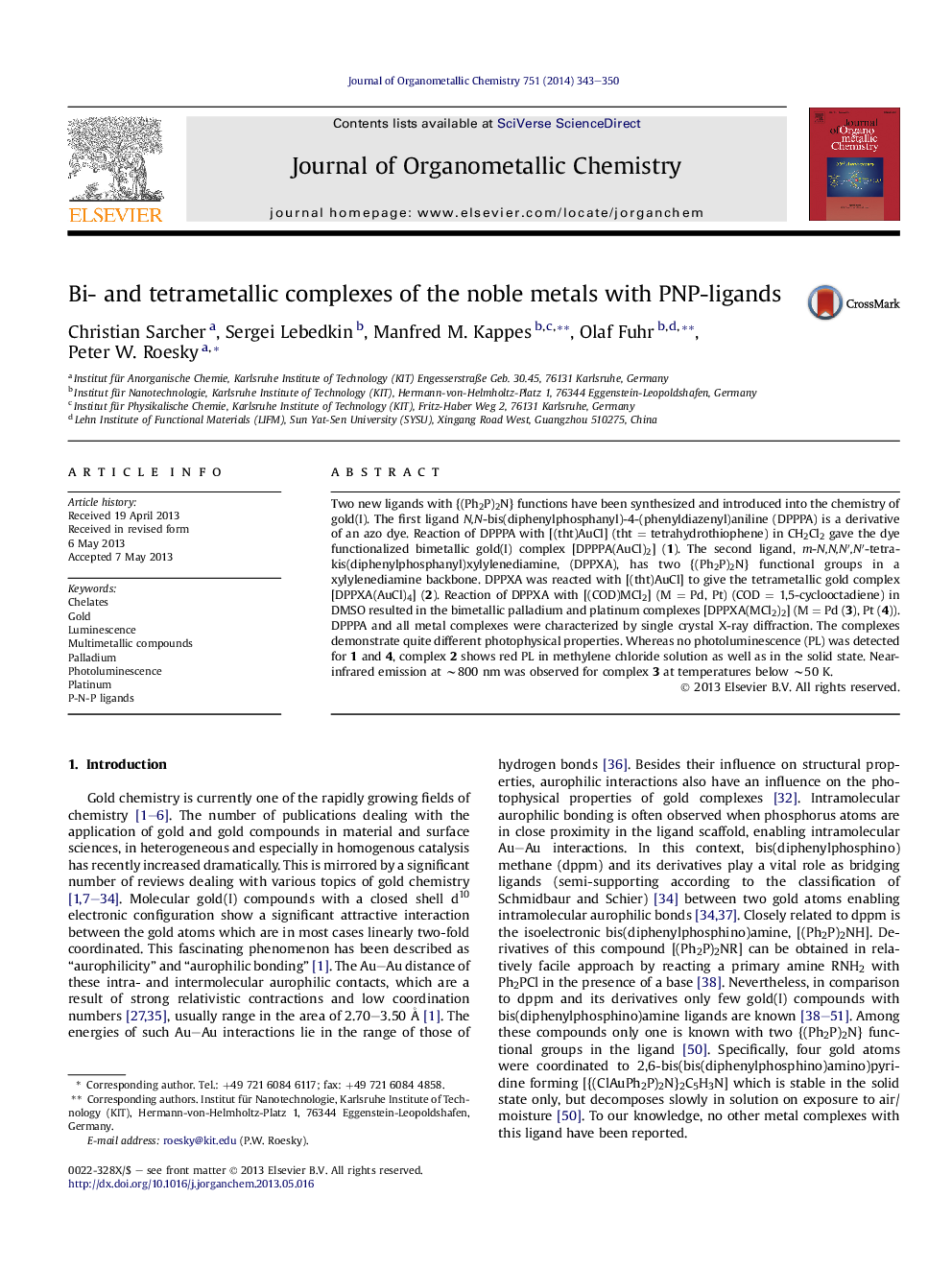| Article ID | Journal | Published Year | Pages | File Type |
|---|---|---|---|---|
| 1324285 | Journal of Organometallic Chemistry | 2014 | 8 Pages |
•Synthesis of ligands with one or two {(Ph2P)2N} functions in the backbone.•Synthesis of bi- and tetrametallic gold complexes.•Synthesis of bimetallic palladium and platinum complexes.
Two new ligands with {(Ph2P)2N} functions have been synthesized and introduced into the chemistry of gold(I). The first ligand N,N-bis(diphenylphosphanyl)-4-(phenyldiazenyl)aniline (DPPPA) is a derivative of an azo dye. Reaction of DPPPA with [(tht)AuCl] (tht = tetrahydrothiophene) in CH2Cl2 gave the dye functionalized bimetallic gold(I) complex [DPPPA(AuCl)2] (1). The second ligand, m-N,N,N′,N′-tetrakis(diphenylphosphanyl)xylylenediamine, (DPPXA), has two {(Ph2P)2N} functional groups in a xylylenediamine backbone. DPPXA was reacted with [(tht)AuCl] to give the tetrametallic gold complex [DPPXA(AuCl)4] (2). Reaction of DPPXA with [(COD)MCl2] (M = Pd, Pt) (COD = 1,5-cyclooctadiene) in DMSO resulted in the bimetallic palladium and platinum complexes [DPPXA(MCl2)2] (M = Pd (3), Pt (4)). DPPPA and all metal complexes were characterized by single crystal X-ray diffraction. The complexes demonstrate quite different photophysical properties. Whereas no photoluminescence (PL) was detected for 1 and 4, complex 2 shows red PL in methylene chloride solution as well as in the solid state. Near-infrared emission at ∼800 nm was observed for complex 3 at temperatures below ∼50 K.
Graphical abstractThree bimetallic complexes of gold, palladium, and platinum as well as a tetrametallic gold complex have been synthesized, structurally characterized, and the photophysical properties of all metal complexes were determined.Figure optionsDownload full-size imageDownload as PowerPoint slide
